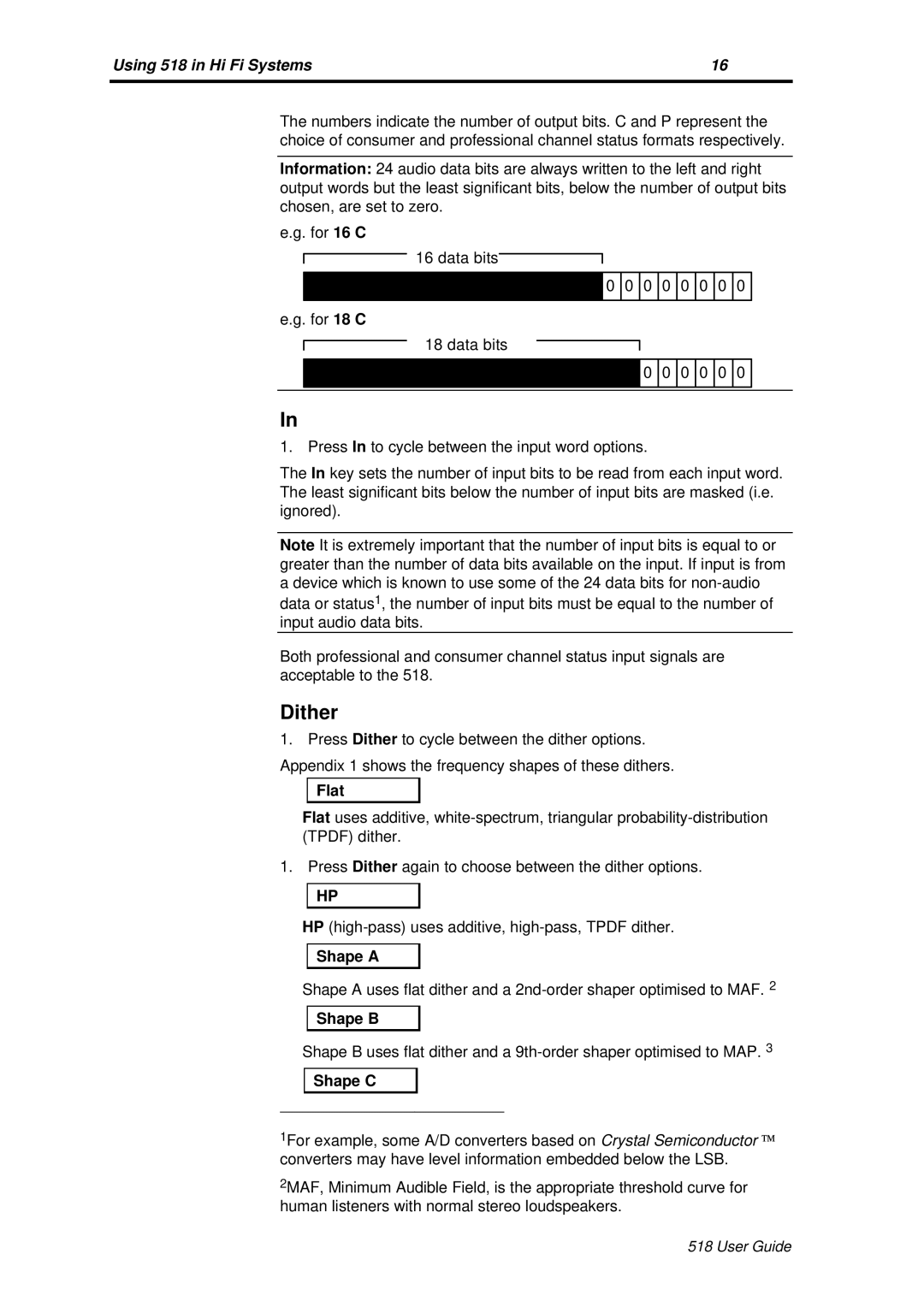
Using 518 in Hi Fi Systems | 16 |
|
|
The numbers indicate the number of output bits. C and P represent the choice of consumer and professional channel status formats respectively.
Information: 24 audio data bits are always written to the left and right output words but the least significant bits, below the number of output bits chosen, are set to zero.
e.g. for 16 C
16 data bits
0 0 0 0 0 0 0 0
e.g. for 18 C
18 data bits
0 0 0 0 0 0 0 0
In
1. Press In to cycle between the input word options.
The In key sets the number of input bits to be read from each input word. The least significant bits below the number of input bits are masked (i.e. ignored).
Note It is extremely important that the number of input bits is equal to or greater than the number of data bits available on the input. If input is from a device which is known to use some of the 24 data bits for
Both professional and consumer channel status input signals are acceptable to the 518.
Dither
1.Press Dither to cycle between the dither options.
Appendix 1 shows the frequency shapes of these dithers.
Flat
Flat uses additive,
1.Press Dither again to choose between the dither options.
HP
HP
Shape A
Shape A uses flat dither and a
Shape B
Shape B uses flat dither and a
Shape C
1For example, some A/D converters based on Crystal Semiconductor ™ converters may have level information embedded below the LSB.
2MAF, Minimum Audible Field, is the appropriate threshold curve for human listeners with normal stereo loudspeakers.
518 User Guide
